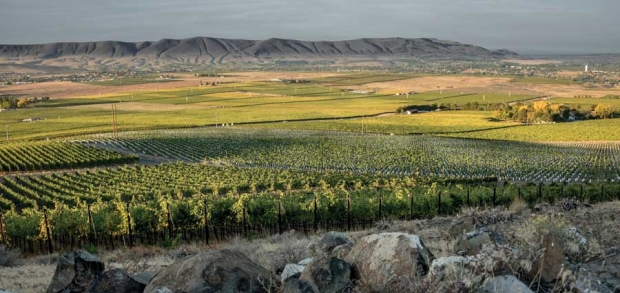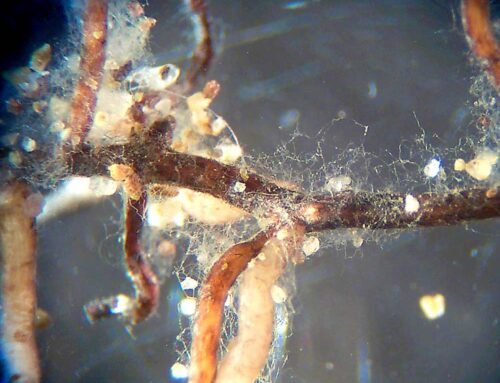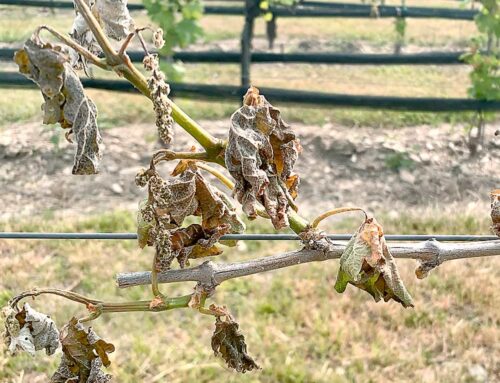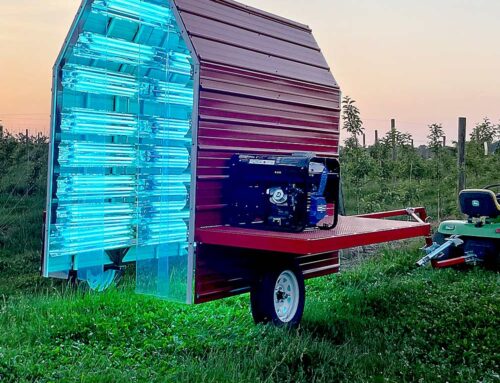
The view from Longwinds Vineyard on Red Mountain. (Courtesy Duckhorn Wine Company)
If there’s a new frontier for luxury Cabernet Sauvignon grapes, the owners of California’s Duckhorn Wine Company think they’ve found it. (Hint, it’s in Washington, not Napa Valley.)
Dan and Margaret Duckhorn, founders of Duckhorn Vineyards and Duckhorn Wine Company, are known within the industry for their pioneering spirit.
When they established Duckhorn Vineyards, one of the first 40 wineries in Napa Valley in the mid-1970s, they focused on making Merlot wine famous in the middle of Cabernet Sauvignon country.
They launched Paraduxx Winery in 1994, the only winery at the time dedicated solely to nontraditional, non-Bordeaux style red blend wines, and, in 1996, began Goldeneye Winery to make Pinot Noir wines from California’s Anderson Valley, years before the Pinot Noir boom.
“They’ve always been driven to go to the best place for a given variety,” said Carol Reber, senior vice president and chief marketing and business development officer for Duckhorn Wine Company, which is a collection of six wineries. “That pioneering spirit is in the company’s culture and DNA and is what led us to Washington state and to Red Mountain.”
Canvasback story
Reber was one of the champions behind Duckhorn’s Washington project, called Canvasback Wines, and is in part responsible for bringing the California wine company to Washington. With Canvasback, Duckhorn is staking its claim on Red Mountain to make Cabernet Sauvignon wines.
Canvasback made its first Red Mountain Cabernet Sauvignon from the 2012 vintage by sourcing fruit from such acclaimed vineyards as Ciel du Cheval, Hedges, Klipsun and Kiona.
Wine inventory was sold out in a matter of months. In 2014, Canvasback planted a 20-acre estate vineyard of Cabernet Sauvignon and Merlot vines near Col Solare vineyard and winery and Force Majeure Vineyards.
East Wenatchee, Washington, native Brian Rudin joined as Canvasback winemaker in 2014. He uses the custom wine facility Artifex in Walla Walla to craft the Red Mountain wine.
Since the initial Canvasback wine release of 2,000 cases, production has ramped up quickly. Rudin plans to make 18,000 cases from the 2015 vintage.
And that’s before the estate vineyard begins bearing fruit that should add another 4,000 to 6,000 cases to annual wine production.
The Canvasback story began during an executive, off-site meeting held on a rainy, spring day in 2011.
As Reber tells it, the company was holding an extensive tasting of Merlot, red blends and Cabernet Sauvignon wines with Washington wines mixed in. It was a blind tasting so no one knew which were company wines or competitor wines.
“When we were done with the tasting and got to the unveiled Cabernet set of wines, we were absolutely blown away by the quality of Washington Cabernet,” she said to Good Fruit Grower. “We thought the quality of Washington was outstanding.”
Duckhorn’s President and CEO Alex Ryan told his winemaker to “get yourself a ticket and get up there” to learn the landscape and search for a possible vineyard location.
“What we found in Washington was a concentration of a few large, successful wineries and hundreds of small, upstart wineries, many very successful in their own right,” Reber said. “It was clear to us that there was a unique opportunity to launch our own project.”
She adds that during Duckhorn’s reconnaissance trips to Washington and discussions with some of the state’s top growers and winemakers about Cabernet Sauvignon, all fingers pointed to Red Mountain AVA.
Red Mountain, in lower Yakima Valley, is the state’s smallest wine region, with just over 4,000 acres, of which about one-third is planted.
The area is home to top-notch vineyards that fetch some of the highest red grape prices in the state.
Duckhorn had its sights on several parcels that were part of a large land auction by Kennewick Irrigation District in 2013.
But the Canadian Aquillini Investment Group bought all 31 parcels totaling 670 acres in one sweep for $8.8 million.
The high-stakes auction was an emotional but bonding experience for those who lost out on their dream parcels. “We were all on the losing team together,” said Reber, who likened the experience to
losing a championship football game.
But the result was what she calls the “law of happy and unintended consequences.” Many people reached out to help them, and they soon bought a parcel.
She credits vineyard management consultant Dick Boushey from Grandview, hired to plant and manage the vineyard, for helping Canvasback transition to vineyard owner.
“Dick’s been our shepherd on the project and our safety net. He hasn’t let us make mistakes that we might have otherwise made.”
She believes local advice is important in wine grape growing because location is site specific and there are many regional differences. Ignoring sage advice from those with on-the-ground experience can be very costly.
National reach
Duckhorn is not the first California winery to expand into Washington. E & J Gallo bought Columbia Winery in 2012 and, years before that, Chalone Wine Group had a presence in Washington under the Canoe Ridge Vineyard banner.
But Duckhorn, with its national sales and marketing team, has something many boutique wineries in Washington lack: national reach and distribution.
Duckhorn Wine Company, with its six wineries, annually produces around 500,000 cases of wine. About half of its annual production comes from its value Decoy wines.
Duckhorn has big plans for its Washington winery. Canvasback’s first release went to 20 states. The 2013 vintage is in the midst of going national and will be distributed to all 50 states.
The national marketing plan for Canvasback is built on market data that shows wine consumers are thirsty for affordable, luxury Cabernet wines, according to Reber.
Canvasback wines retail for $40 per bottle, which translates to being sold on-premise (in restaurants) for $65 to $80.
“There’s a lot of momentum for high quality Cabernet wines that sell for less than $100 on-premise,” she said. “When you think about the price-to-quality ratio, Washington wine is very well poised.”
Reber noted that the average retail prices for Napa Valley Cabernet wines are $75 to $100, which translates to $150 or more in a restaurant.
It’s an expensive place to grow grapes, with vineyards fetching $250,000 to $350,000 per acre compared with Washington’s $20,000 to $50,000 per-acre cost.
Canvasback’s estate vineyard, one of the highest vineyards in elevation on Red Mountain, is called Longwinds.
“As a high-quality brand, we’re a very dirt-focused winery,” Reber said. “That’s why we bought property on Red Mountain and planted Longwinds Vineyard and why we acquire premiere vineyards in Napa Valley.
“The vineyards come first and dictate everything,” she said. A tasting room and wine facility are not even in the planning stages.
For now, the company is concentrating on getting its Longwinds Vineyard off to a strong start, launching Canvasback in the national market and being good neighbors and stewards of Red Mountain. “We’re in it for the long haul,” she said. •






Leave A Comment